|
Fort
Barrancas, FL Ft.
Concho, TX Ft. Clatsop, OR Fort
Greenville, OH
Ft. Hawkins, GA Fort
Jefferson, FL Fort
Jefferson, OH
Ft. Langley, BC
Ft. Martin Scott, TX
Fort Morgan, AL
Fort Moultrie, SC
Ft. Pitt, PA
Ft. Recovery, OH
Fort Sumter, SC
Ft. Wayne, IN
Historic Forts
Fort Jefferson, Dry Tortugas National Park, FL - March 25, 2013
This fort is really sort of out in the middle
of nowhere. Actually it is in the middle of nowhere but in the
19th century was also in a very strategic location. It was built
to guard several neighboring islands that had decent harbors that could
be used by an adversary that wanted to control the Gulf of Mexico and
attack American shipping going from the Mississippi River to the east
coast of the country and really became very important to the US after it
made the Louisiana Purchase. This fort never fired a shot in anger
nor was it attacked. During the Civil War it was used to
incarcerate Union prisoners who had dodged the draft, deserted or were
considered to be undesirable for other reasons. If one was not
shot for desertion the sentence was life. Not much of a life if
you were here.
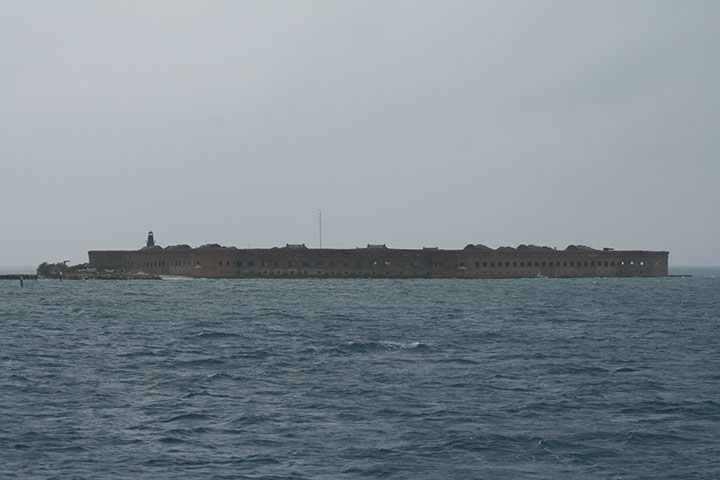
Our first look at this imposing structure 75
miles west of Key West, FL. Imagine back during the Civil War that
you are arriving on a sailing ship as a prisoner. This fort ona
ten acre island with no water, no shade, no anything will now be your
home for who knows how long. While here you will wear a chain with
a 30 pound ball on it. Even worse, what if you were a Union
soldier and this was your new duty station? You would have to ask
yourself what had you done to deserve this?
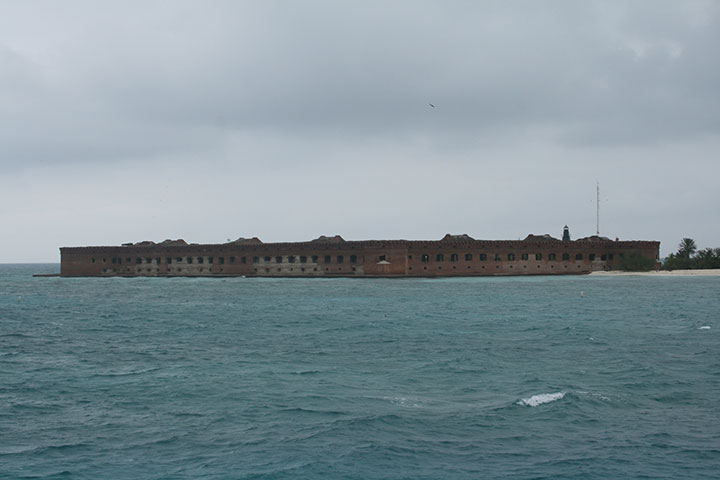
Normally one sees photos of fort in the bright sunshine associated with
the Keys, but today it was obviously windy and overcast resulting in
choppy waters and light rain at times.
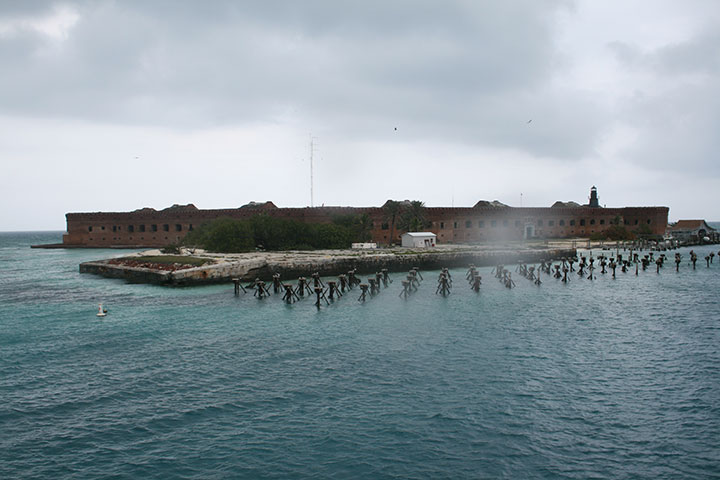
Due to the rain a little moisture got on the lens for the next couple of
photos. This structure used to be a coaling station that was put
in during the Spanish-American war for the steamships of the era.
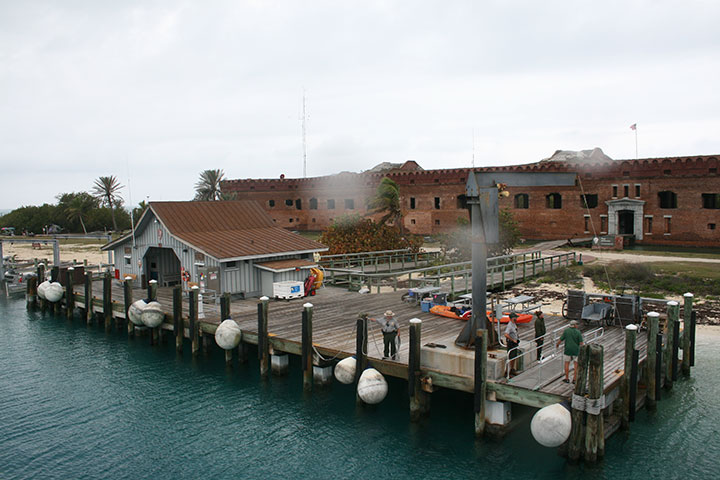
There are four groups of people that go out to Fort Jefferson. The
first group are persons like me interested in both history and forts.
Next there are birders as this is on a migration route and the are
plenty of birds to see not only here but on islands we pass on the way
in and out. Third there are snorkelers as there are some coral reefs on
the island to swim around, and although on this day it wasn't the
greatest for it, many still went in the water. And then there are
campers. These are hardcore as they have to bring everything in
with them including food and water and then haul out their trash.
The campground is in the area with trees on the left side of the photo.
I think I counted four rangers and then there was the person that was in
the gift shop that live in the fort, not counting any spouses or
dependents. Their supplies are brought out to them once a week.
The day I was on the island the person in the gift show told me they
were having problems with the electric generators due to the storm that
came in overnight.
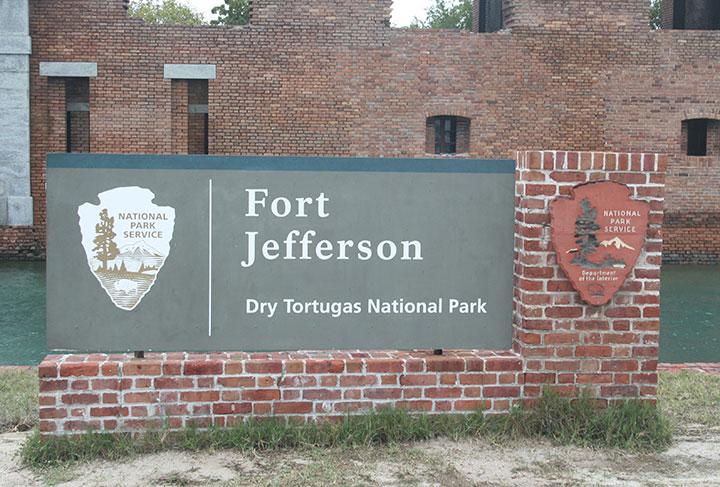
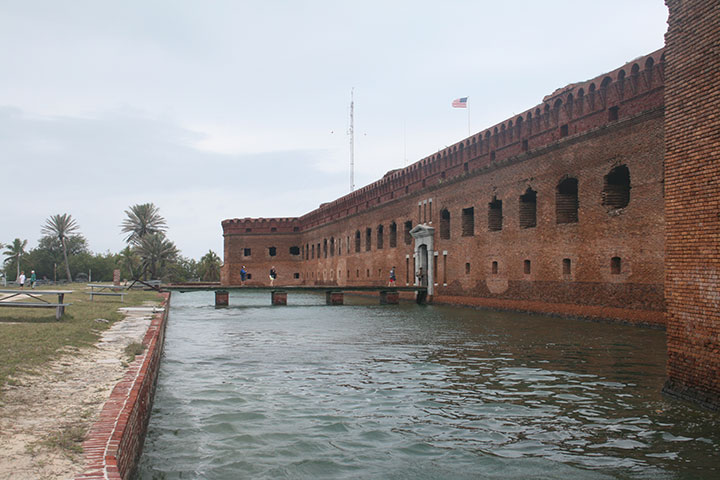
A moat surrounds the fort for not only protection but in theory it was
part of the sewage disposal system. On the side opening to the
Gulf of Mexico the latrines all drained into the moat. In theory
at high tide it would float away the sewage that was in the moat as had
worked at other forts like this. But here the difference between
low and high tide is only six inches. So the toilets were
essentially backed up. Or as is sometimes said in the vernacular
there were a lot of turds floating in the punch bowl. Great duty
station!
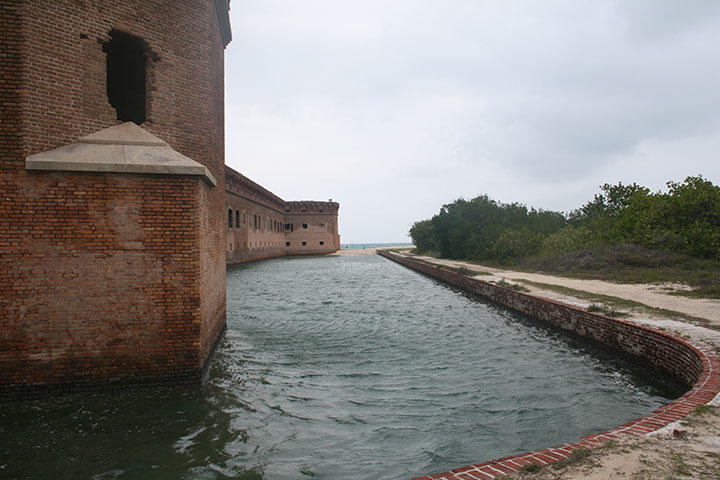
At each corner of the fort, as in all forts for many generations, were
bastions. These protruded out from the wall so fire could be
directed down the walls on anyone trying to scale them to gain entrance
into the fort. In later years in wooden forts of the US they would
also be called blockhouses but they served the same purpose.
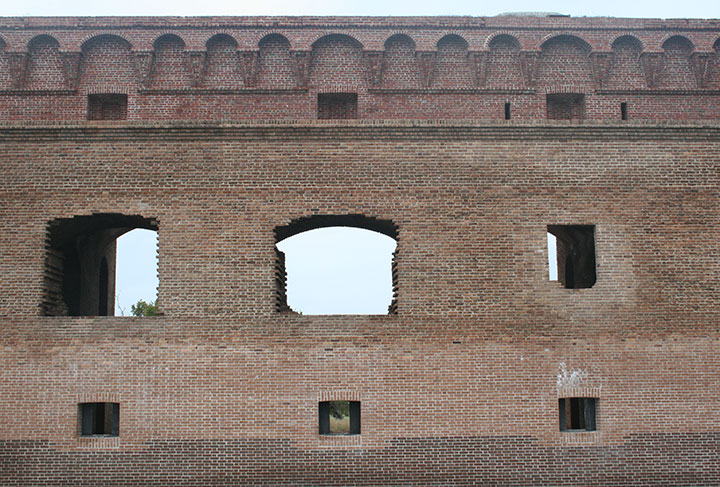
Note the different color of the some of the 16 million bricks used to
construct the fort as the fort was under construction for many years and
the source of the building materials changed. Everything to build
the fort, and maintain the garrison and prisoners had to be brought in
by boat.
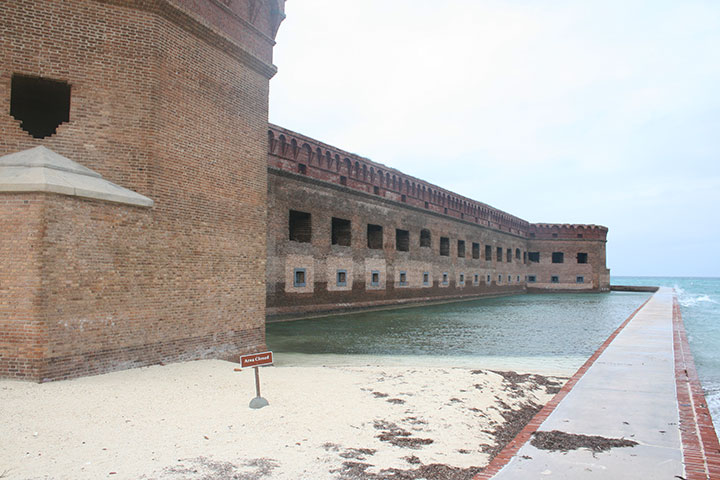
Here we see more bastions and part of the moat where the latrines would
have drained into.
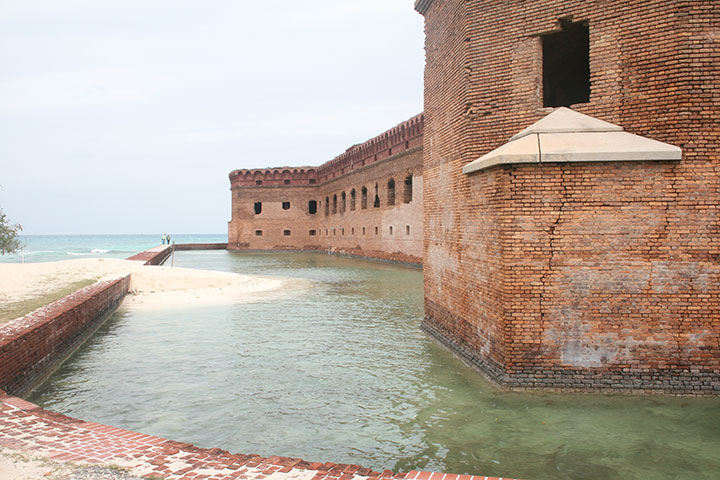
The fort was never really completed and all of the cannon mounted as due
to the soft foundation of sand it was built on it started to settle and
the walls cracked, as can be seen here.
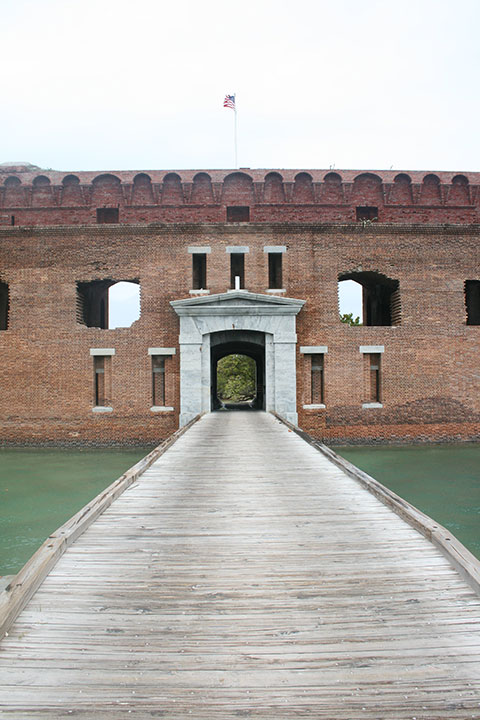
Time to head inside.
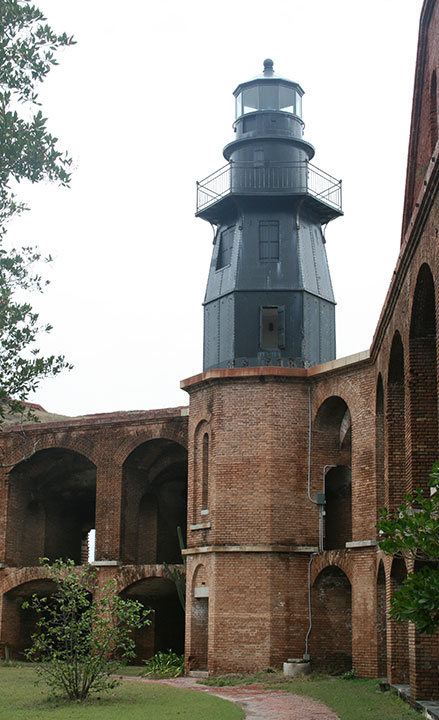
The lighthouse.
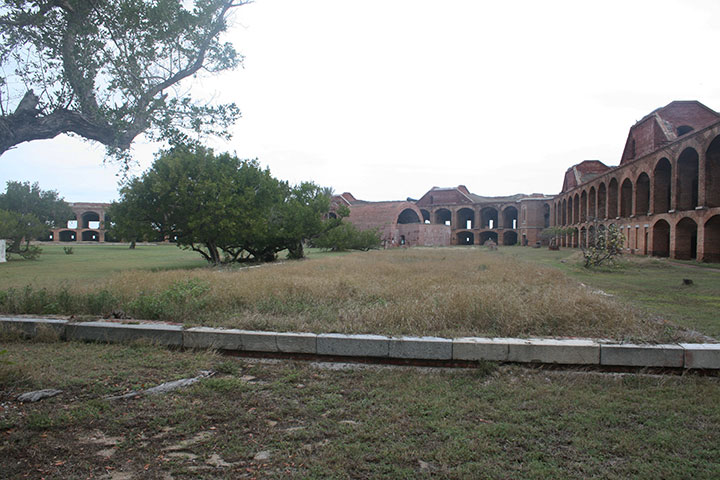
The island is about ten acres and the interior of the fort is 9.5 acres,
making it the third largest fort among the seacoast defense forts in
size of the interior. Fort Monroe in Virginia was the largest with
40 acres and Fort Adams in Rhode Island was number two with 20 acres.
Directly in front of us is the foundation for the enlisted men's
barracks.
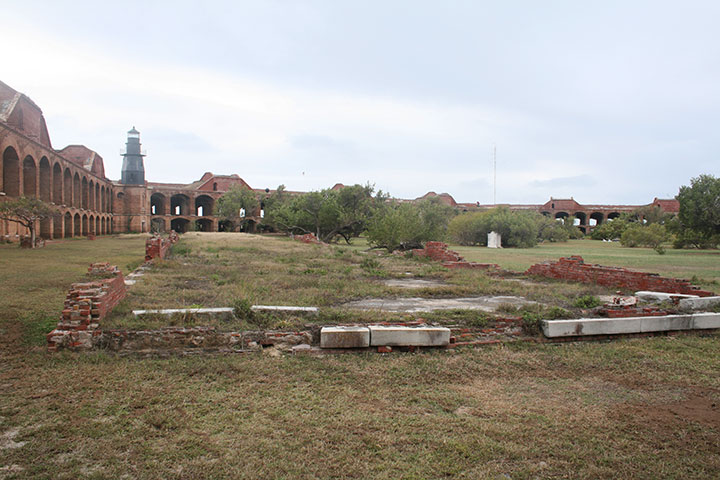
Here we are at the other end of the barracks.
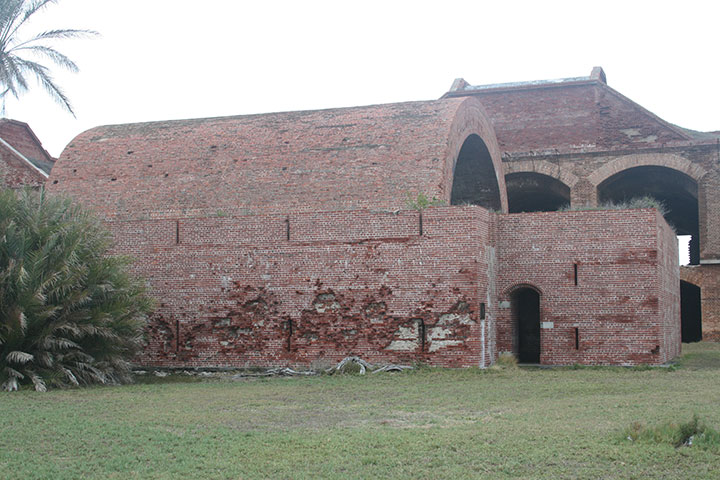
This is the magazine for all of the explosives on the island.
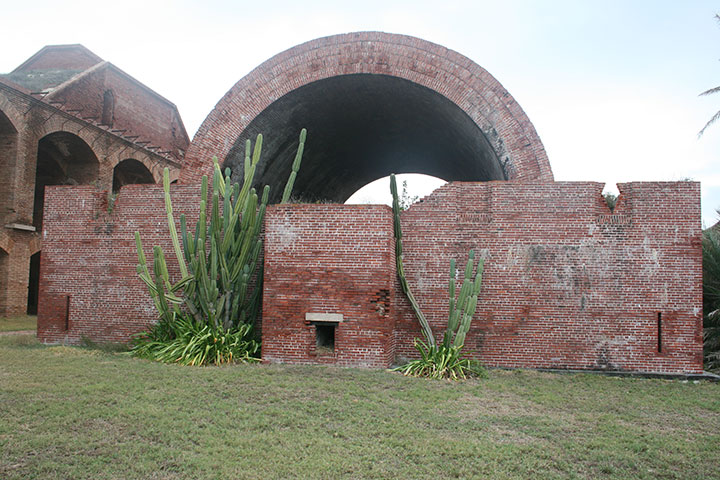
Note the thickness of the roof to protect against mortar fire. The
cannons of the time period Fort Jefferson was built and used were for
the most part only able to shoot horizontally. It wasn't until
later that artillery was able to fire high arching shells that could
have penetrated the arched roof.
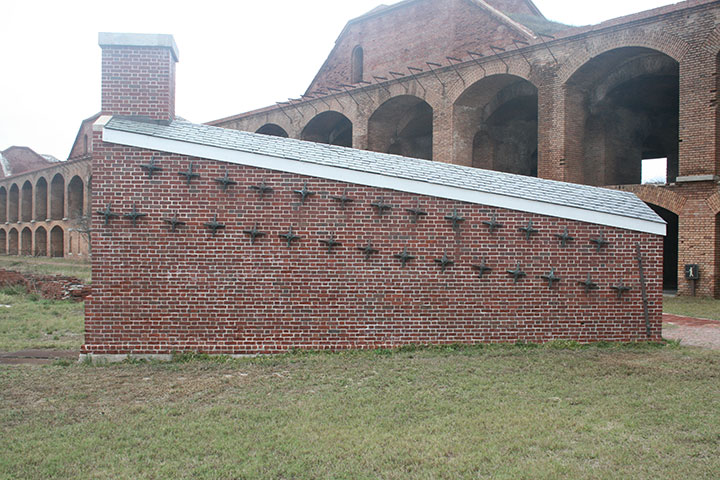
This is rather interesting as it is a hot shell furnace. Cannon
balls would be loaded on the left side up towards the top and then slide
down to the bottom at the right as indicated by the iron crosses on the
side. The cannon balls would come out hot which when fired from
one of the fort's cannons could set a wooden ship on fire.
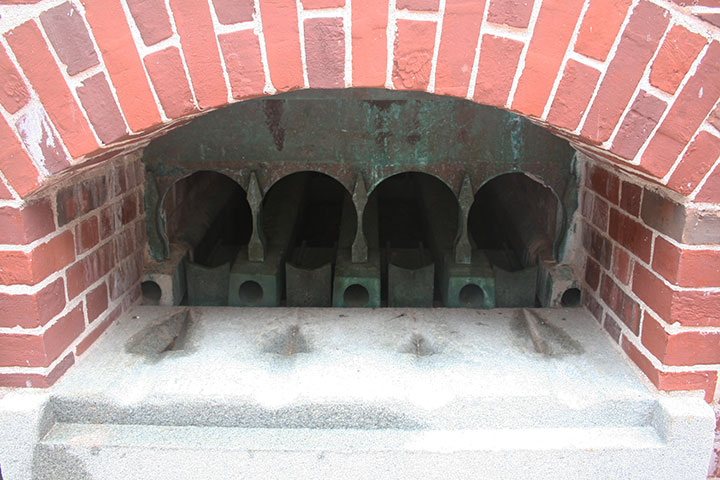
This is were the hot cannon balls came out.
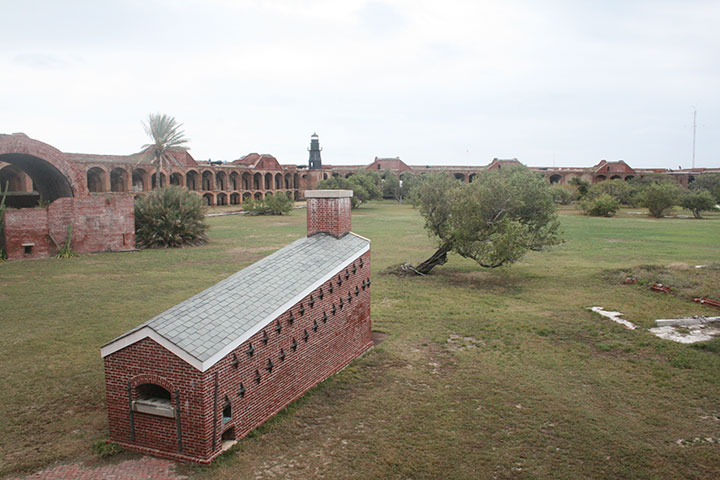
Another view of the furnace, the magazine, and part of the 9.5 acre
interior and parade ground.
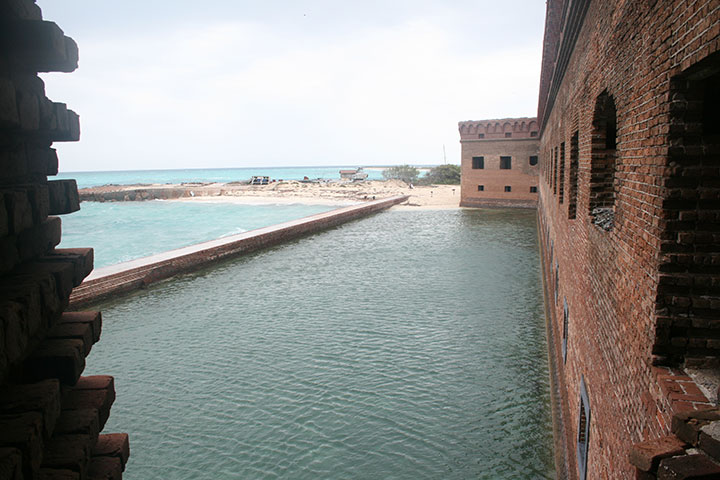
Looking down the wall this bastion could defend against attackers.
The fort is undergoing constant restoration as many parts of the walls
are missing. Actually due to budget issues the National Park and
Fort may be closed in the future which would be most unfortunate.
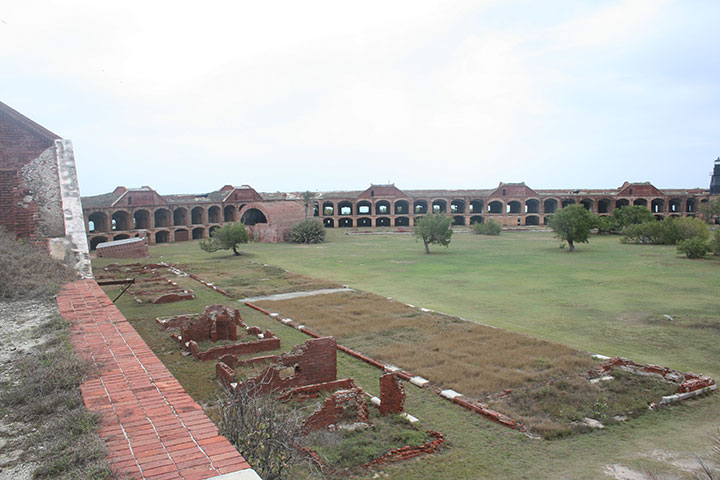
This view from the third and top level shows remains and foundation of
the officer's quarters.
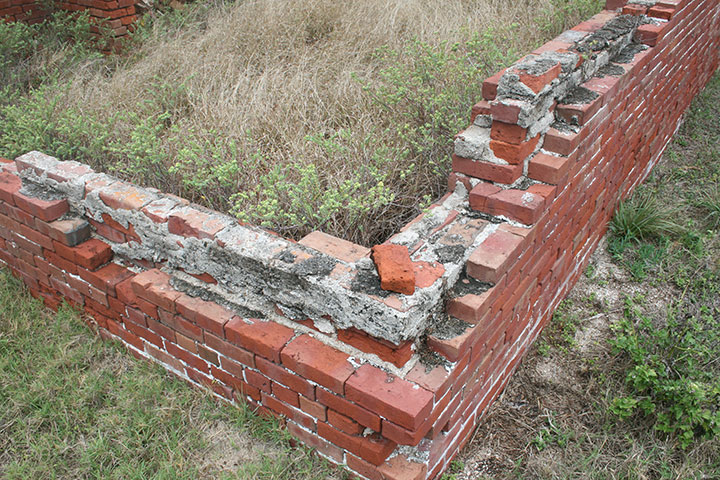
This close-up shows that the brick construction for the officer's
quarters were three bricks thick.
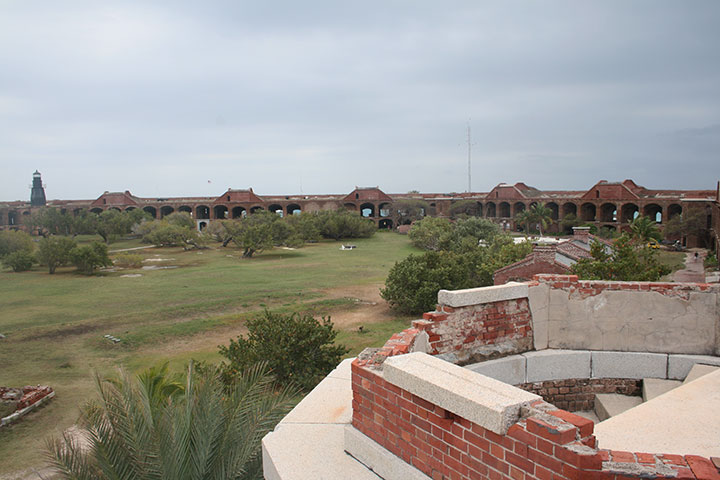
Another view of the parade ground from the
top level. At the right one can see the top of the circular granite
stairs that were used within the fort.
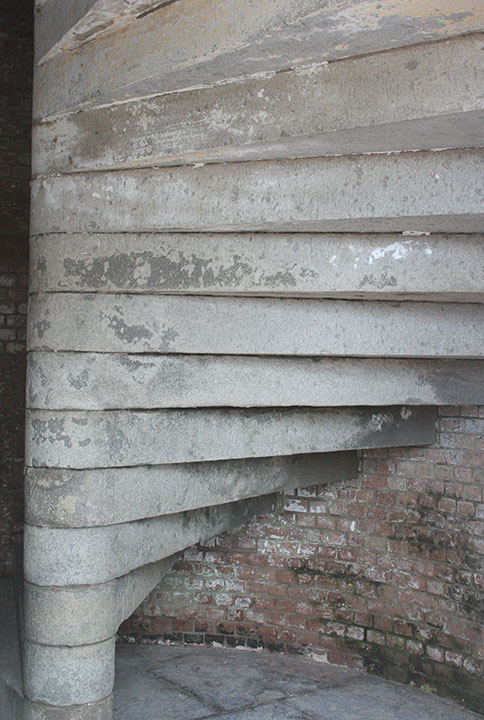
This photo shows the construction of the stairways with granite shipped
in from New England.
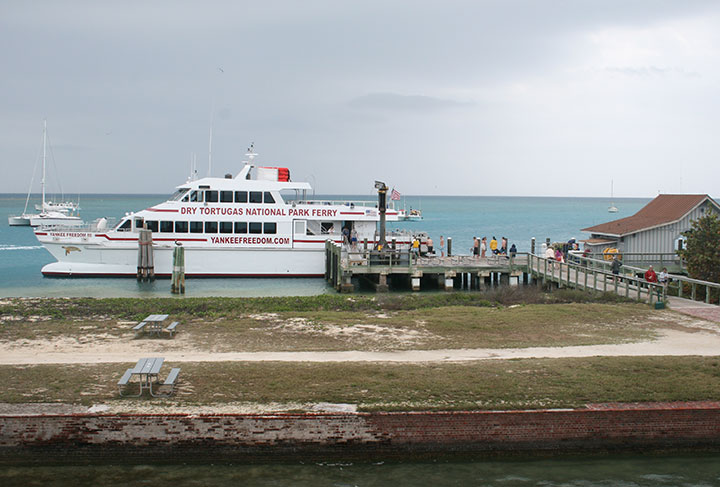
My ride out and back. Unlike the garrison and prisoners at the
fort I only stayed for four hours on the island and then able to sail
back to civilization at Key West.
Fort
Barrancas, FL Ft.
Concho, TX Ft. Clatsop, OR Fort
Greenville, OH
Ft. Hawkins, GA Fort
Jefferson, FL Fort
Jefferson, OH
Ft. Langley, BC
Ft. Martin Scott, TX
Fort Morgan, AL
Fort Moultrie, SC
Ft. Pitt, PA
Ft. Recovery, OH
Fort Sumter, SC
Ft. Wayne, IN
|
























